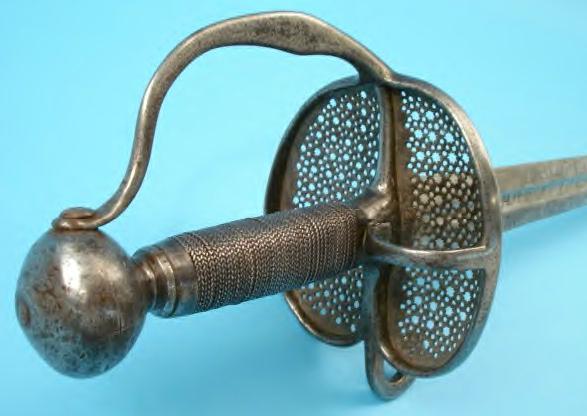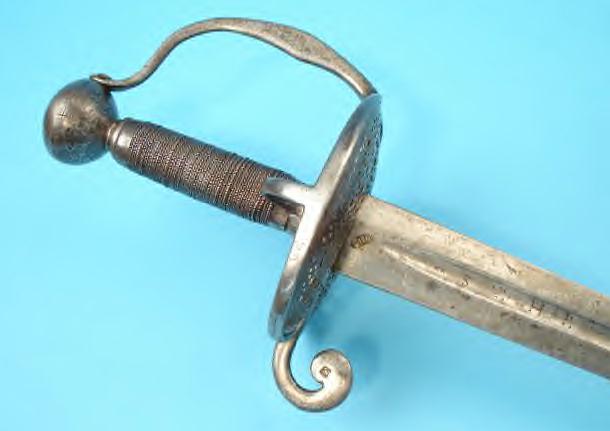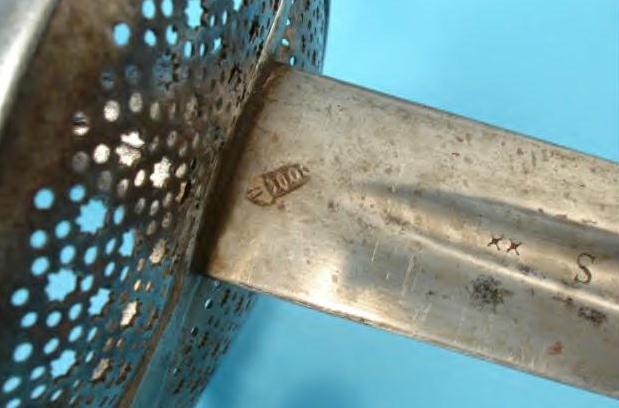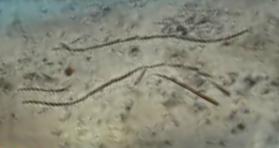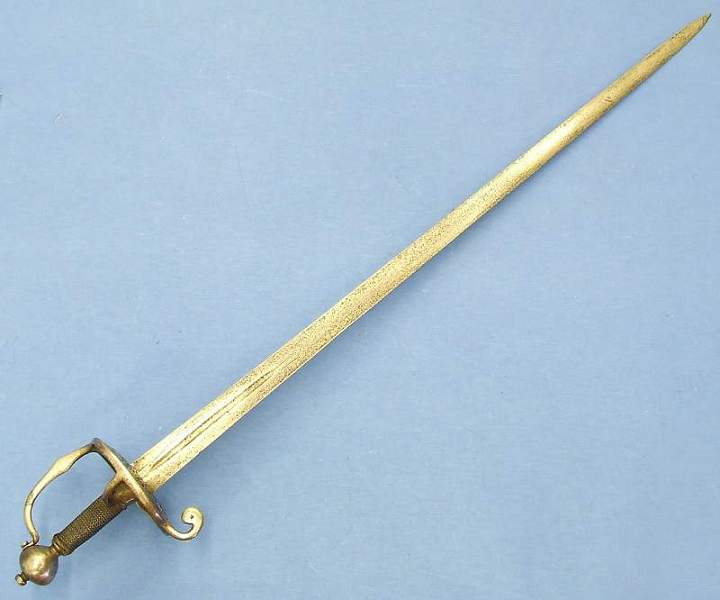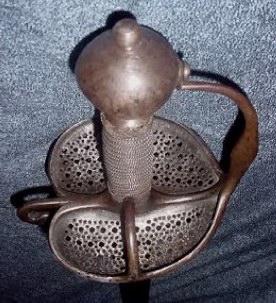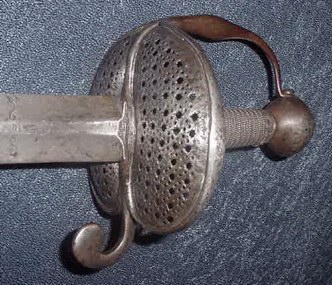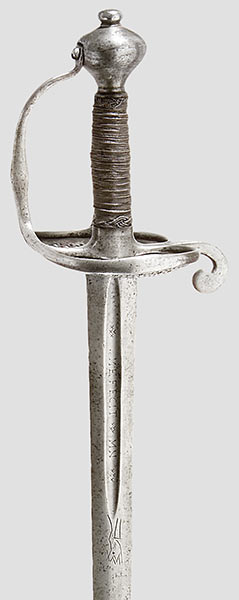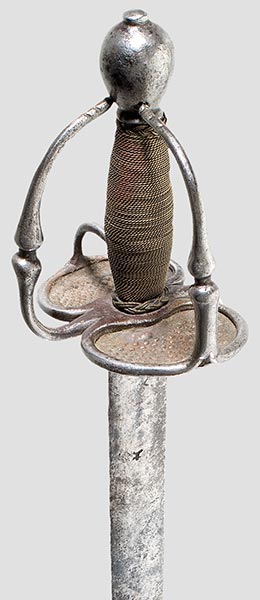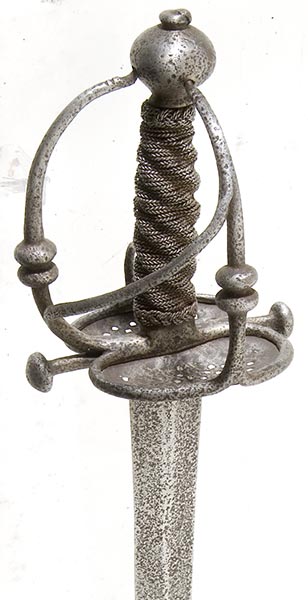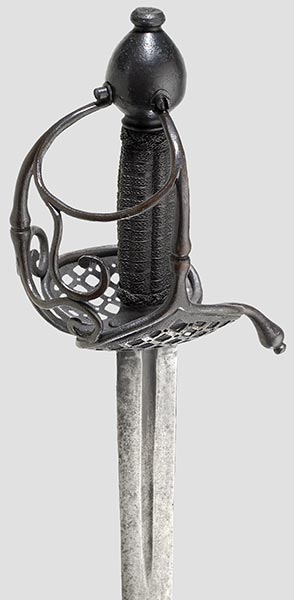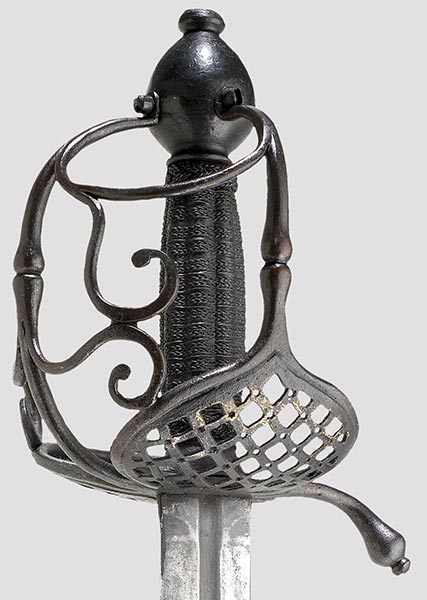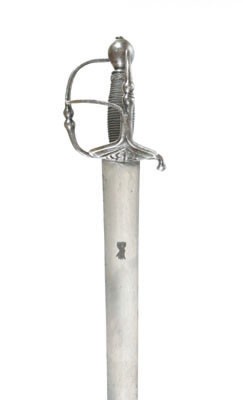Posts: 630 Location: Tucson
Thu 31 Jul, 2008 11:23 am
You can see photos of mine in my user album
http://www.myArmoury.com/albums/displayimage....amp;pos=23
My past research indicates that the quatrefoil stamp on the quillon does mark this as a 1679 pattern Mine has it as well. I have heard two different things from two respectable sources on the quatrefoil stamp on the quillon, 1. the quatrefoil stamp was placed on the blade in Amsterdam, and 2. the quatrefoil stamp was placed on the quillon by the French before sending it to their allies. The French supplied these swords to their allies in Ireland (and elsewhere) during the war between James and William. It is my understanding that believe it or not, the 1679s were purchased by France through Amsterdam dealers who ordered the swords from Germany. :eek: Hence, the german, amsterdam and french stamps all on the same sword. It would seem the French could not order the swords directly from the Germans but the ever enterprising Dutch were more than willing to act as intermediaries to turn a buck during one of the lulls in the fighting in that period. The general form of this sword was commonly used by the dutch troops as well during this period.
The sword I have is quite robust, and is a very nice cut and thrust sword, has a very serviceable point for the thrust as well as a substantial oval cross section for cutting. Definitely a sword for mounted cavalry. Mine has a different Amsterdam control mark (XXX) than the one you showed and has a mark with a crown over interlocked letters "BC" which I believe is for the shop in Germany that made the blade. I have seen different inscriptions and shop marks on these, and different pierce patterns on the plates. Probably each shop making these had thier own style. Mine has a running wolf, and SOLINGEN in the fuller. tr
